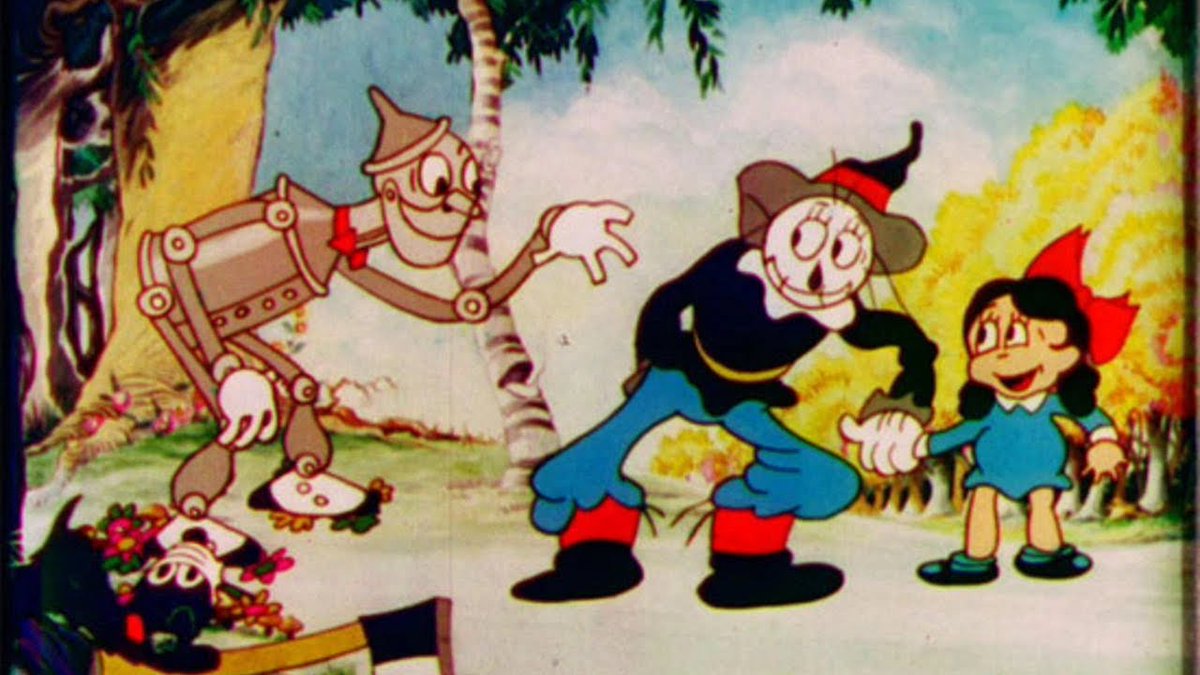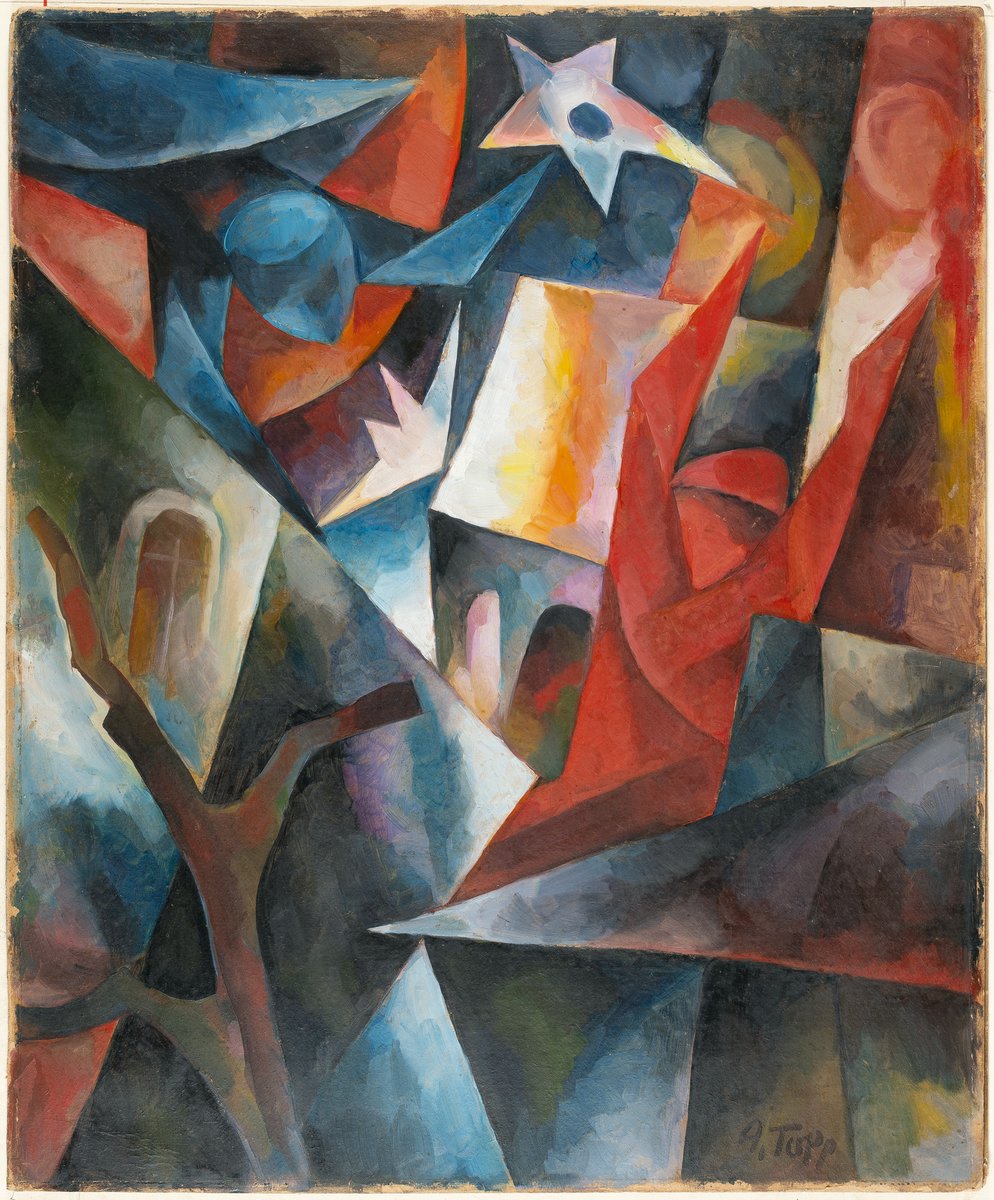In honor of the 100 year anniversary of Buster Keaton’s classic short ONE WEEK, which features one of the earliest meta-jokes in film, I’m doing a thread on the history of fourth wall-breaking and self-referential humor in movies and cartoons.
Many of the earliest films had actors address the audience, as in a magic act. Perhaps the first to use awareness of the camera for humor were comedians Charlie Chaplin and Fatty Arbuckle. Arbuckle acknowledges that he’s in a “two-reeler” (short film) in a 1918 clip below.
Animated cartoons were making jokes about their own artificiality nearly from the beginning. Silent-era cartoon characters like Felix the Cat and Ko-Ko the Clown were constantly interacting with the animators drawing them and using floating punctuation marks as props.
The first feature film example of metacinema is Buster Keaton’s 1924 masterpiece SHERLOCK JR., where a projectionist enters into a movie screen. The film’s surreal sight gags and jaw-dropping stunts make this one of the all-time greatest comedies, even a century later.
With the coming of sound in the late ‘20s, the wildly anarchic Marx Bros. were the silver screen’s first comedians to break the fourth wall by talking to the viewers. On stage, Groucho would often make sarcastic comments to the audience, and he continued this habit in his movies.
Another early fourth wall-breaker was director Ernst Lubitsch, who directed some of the most whimsical and sophisticated musicals of the ‘30s. He would often have his characters confide in the audience, sometimes in song. Can you imagine a movie ending like this now?
Still, it was the Looney Tunes cartoons that pioneered absolutely demolishing the fourth wall by having characters openly flaunt their artificiality. An early example is the bizarre ending of this 1932 WB short where the animators literally give up on the film.
Tex Avery really pushed the limits of meta insanity in his Looney Tunes of the mid-‘30s. Audiences used to cute Disney cartoons were startled to see cartoon characters escaping the screen… and even murdering members of the audience! Avery pushed every envelope imaginable.
When Tex Avery left WB in the early ‘40s for MGM, his cartoons got even more wild and irreverent, smashing every convention of film to bits with remarkable creativity. Long before the term “postmodernism” was coined, Avery was disrupting our expectations for a laugh.
Before Tex Avery headed for MGM, he left WB his greatest creation: a certain smart-alecky wabbit named Bugs Bunny. Having Bugs acknowledge that he’s in a cartoon, as he did frequently, didn’t diminish his character in the slightest. It only added to his likable self-awareness.
Immediately after Tex Avery started breaking the fourth wall in his cartoons, other studios jumped on the bandwagon and characters like Popeye and Woody Woodpecker were making meta jokes. Even Disney borrowed one of Avery’s iris-out gags for a Donald Duck short.
Live-action filmmakers also took notice of Tex Avery’s influence, and ‘40s comedies featuring the likes of W.C. Fields, the Three Stooges, and Abbott & Costello took a drill to the fourth wall.
Comedian Bob Hope’s frequent Bugs Bunny-style meta-jokes (many of them written by WB animator Frank Tashlin) appealed to audiences by suggesting that he didn't take himself too seriously. This gave a fun hangout quality to his “Road To” movies with Bing Crosby.
The craziest assault on the fourth wall in film history is HELLZAPOPPIN' (1941), a demented explosion of surreal humor by comedians Olsen & Johnson. You can just see in this clip how delighted they are to be getting away with this. Maybe the most underrated comedy of all time.
In the 1940s, the fourth wall breaks in the Looney Tunes cartoons got increasingly brazen, openly mocking WB studio boss Jack Warner (known as “J.L.”), rival cartoon studios like Disney, and even the censors at the Hays Office (I can’t believe they got away with that one).
The ultimate masterpiece of fourth wall busting is Chuck Jones’ DUCK AMUCK, where Daffy Duck battles with an offscreen animator. The characterization of Daffy is so strong that we fully believe he exists even as the film spends seven minutes telling us he doesn’t. Genius.
When Looney Tunes animator Frank Tashlin moved into directing live-action in the '50s, he used cartoony meta-humor to satirize widescreen movie theaters and a recent invention known as television (Tashlin hated TV and found an opportunity to attack it in all of his movies).
Wacky comedian Jerry Lewis (who learned to direct from Tashlin) frequently broke the fourth wall, as in this extraordinary ending to his film THE PATSY. According to Lewis, "Usually I have my actors look direct into the camera at least once in a film, if a point is to be served."
The practice of having a narrator character address the movie audience goes back at least to Disney's PINOCCHIO, but it has been used throughout the years in films like FERRIS BUELLER'S DAY OFF, THE WOLF OF WALL STREET, and even this year's BIRDS OF PREY. Examples below:
One meta joke that goes back a ways is the Ironic Product Placement gag. Jack Benny and Fibber McGee used to kid their sponsors on radio, and this joke has been carried over into more recent comedies like WAYNE'S WORLD and 30 ROCK.
Another device that might be older than you think is characters in horror movies ironically commenting on horror movie tropes. 1996's SCREAM popularized this, but a similar joke pops up in the 1944 Cary Grant movie ARSENIC AND OLD LACE.
With the collapse of the old Hollywood studio system in the '60s, zany comedies with fourth wall-breaking became less common. Instead, the avant-garde artists of the French New Wave picked up the habit, using meta-references to break down the conventions of film.
Meta jokes also became less common in animation, given the more juvenile nature of '60s, '70s, and '80s TV cartoons. One major exception was ROCKY & BULLWINKLE, which often employed humorous self-mockery. This is such a funny gag here:
Among the filmmakers who continued the grand art of meta humor are the Monty Python troupe. They were constantly interrupting their shows and movies with distinctively British meta-absurdity.
Maybe the director most associated with fourth wall-breaking is Mel Brooks, whose humor always had an old-school, vaudevillian bent. Check out a very funny SPACEBALLS clip below featuring the great Rick Moranis (who I hope has a speedy recovery).
Not only did the Muppets have some of the funniest and most charming meta humor, they're probably the only ones to devote an entire musical number to breaking the fourth wall:
There were some great meta jokes in the spoof movies of Jim Abrahams and David & Jerry Zucker, like AIRPLANE! and TOP SECRET! (The key to making great movies is add exclamations). One of their best jokes comes from their little-seen TV series POLICE SQUAD! (Another exclamation.)
One of the most famous fourth wall breaks comes from Woody Allen's Oscar-winning ANNIE HALL. Allen later made the great 1985 feature THE PURPLE ROSE OF CAIRO, a fantasy about a fictional movie character who enters the real world.
Fourth wall breaking isn't always the domain of pure comedies. David Fincher's FIGHT CLUB is an example of metacinema that uses the technique to mess with the reality of the film, even suggesting that one of the characters is using subliminal messaging to screw with us.
One of my favorite fourth wall breaks is from GREMLINS 2 by @joe_dante, where the gremlins escape the film to mess with the projector. This gag was altered for the VHS release to have the gremlins invade your VCR.
Partially due to the success of 1988's WHO FRAMED ROGER RABBIT, zany cartoon humor made a comeback and fourth wall-breaking returned to TV cartoons with a vengeance. Here are some of my favorite examples:
Overt fourth wall breaking is less common in movies today than it was in the days of the Marx Bros. and Bob Hope, but it's always a delight when it pops up, like in this great bit from SCOTT PILGRIM VS. THE WORLD by @edgarwright.
The success of recent films like DEADPOOL and 21 JUMP STREET prove that creative meta jokes still hold strong appeal to audiences.
To end this in the most self-serving way possible, I always enjoy breaking the fourth wall in my cartoons. I was once part of a screening where several of the files weren't playing right. When they screened my cartoon FIFTY SHADES OF GROUNDHOG, this gag got a big laugh:
Here's the link to that particular cartoon. Thanks for reading!
• • •
Missing some Tweet in this thread? You can try to
force a refresh














